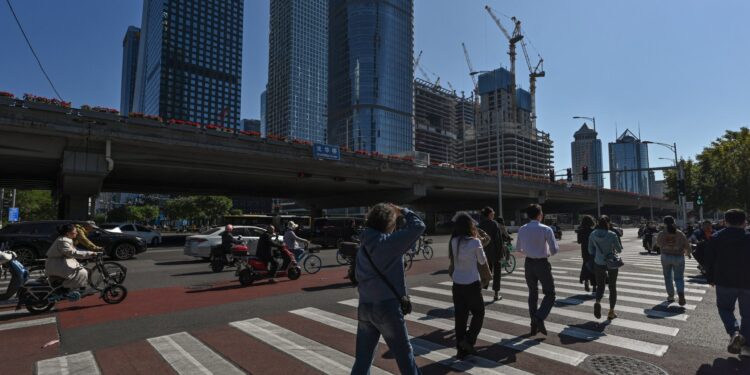The Economist highlighted a bleak outlook for the Chinese economy for 2025 in a new report, focusing on the need for bold action to stimulate domestic demand and overcome economic obstacles.
The report, prepared after China’s Central Economic Work Conference, indicates that the country is facing a deepening economic slowdown amid new threats of US tariffs of up to 60%.
Existing and imminent challenges
In November 2024, retail sales rose only 3% compared to the previous year, with inflation limited to 0.2%.
These numbers – according to the Economist – reflect the chronic hesitation of Chinese consumers who have not regained their confidence since the Covid-19 crisis in 2022.
With US President-elect Donald Trump threatening to impose additional tariffs on Chinese products, Citigroup estimates indicate that these measures may reduce the economic growth rate in China by 2.4 percentage points.
Limited effect of previous stimulation
Despite previous stimulus efforts such as lowering interest rates and bank reserve requirements, demand for credit remained weak, according to the newspaper. The government’s attempts to support the real estate market, including discounted loans worth 300 billion yuan ($42 billion), witnessed limited demand of no more than 15% until the end of last November.
The current challenges are partly due to excessive previous stimulus that led to high debt and inflation of the real estate sector. In 2012, China adopted structural reform policies focused on reducing industrial surplus and reducing corporate debt, but it also restricted financial flexibility during the current slowdown.
New signs indicate a change in Chinese policies. Last November, the Ministry of Finance announced the issuance of additional bonds worth 10 trillion yuan ($1.4 trillion) to reduce costs for local governments.
About 1.2 trillion yuan ($168 billion) is expected to be released in 2025 to support economic growth. The Economic Work Conference also paid special attention to increasing domestic consumption, going beyond Xi Jinping’s primary goal of improving manufacturing.
Measures to stimulate consumption
Stimulus policies showed some positive results in the real estate market, as new residential property sales rose last November for the first time in three years.
The government is expected to continue its programs to support the replacement of home appliances, which helped raise sales of these products by 22% last November.
In addition, the government intends to increase pensions and support health insurance to encourage citizens to save less and spend more, the newspaper reported.
According to Goldman Sachs estimates, China’s overall fiscal deficit could rise to about 13% of GDP in 2025.



